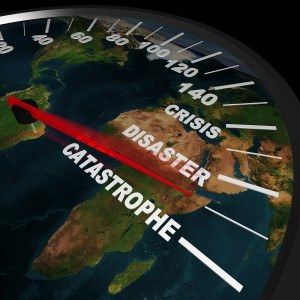 September was a tough month for the United States in terms of tropical cyclones, and sites around the world faced tsunamis, typhoons and earthquakes.
September was a tough month for the United States in terms of tropical cyclones, and sites around the world faced tsunamis, typhoons and earthquakes.
The United States dealt with two over the 30-day period: Tropical Storm Gordon and the costlier Florence, which made landfall in North Carolina as a Category 1 hurricane, Aon’s Impact Forecasting noted in the latest edition of its monthly Global Catastrophe Recap report.
At least 53 people were killed directly or indirectly by Florence, with total economic losses estimated to exceed $10 billion and insured losses expected to reach low-digit billions due to low levels of flood insurance coverage.
The month was rough in other locales as well.
- Typhoon Jebi made landfall in Japan and prompted widespread wind and flood damage across numerous prefectures. Total economic losses were expected to reach well into the billions of dollars, and the General Insurance Association of Japan (GIAJ) said that nearly 486,000 insurance claims had been filed, with the expectation of a multibillion-dollar payout.
- Super Typhoon Mangkhut caused widespread trouble in the Philippines, Hong Kong and China. The Category 5 storm killed at least 102 people and damaged more than 210,000 homes in the Philippines alone. Total combined economic damage and net loss business interruption was expected to reach into the billions of dollars, while the local insurance industry in China and Hong Kong forecast payouts approaching or exceeding $1 billion.
- A major magnitude 7.5 earthquake and tsunami caused catastrophic damage across Indonesia’s Sulawesi Island on Sept. 28, killing more than 2,000, with many more missing. Total economic damage was expected to approach or exceed $1 billion.
- Another strong earthquake struck the Japanese island of Hokkaido on Sept. 6, killing 41 people and injuring 680 others. The GIAJ said that 12,279 insurance claims had been filed.
“September will be recorded as the costliest month so far of 2018, as global economic losses from natural catastrophes are expected to reach into the tens of billions of dollars,” Steve Bowen, Impact Forecasting director and meteorologist, said in prepared remarks.
Bowen added that many of the major catastrophes of the month – including Hurricane Florence, Typhoon Jebi, Typhoon Mangkhut and the Indonesian earthquake – were poised to cause tens of billions in economic damage. But the majority of losses for each are likely to be uninsured.
“This once again highlights that whether a country is considered mature or emerging, there continue to be gaps in insurance coverage on either a marketwide or individual peril basis,” Bowen said. “As natural peril risks increase, it becomes even more important to close those gaps to help people in the recovery process.”
Among other global natural catastrophe loss events in September:
- Significant flooding in countries such as Mexico, where more than 300,000 homes were inundated by floodwaters in the hardest-hit state of Sinaloa. Other severe flooding events impacted parts of the United States, West Africa, China, India, North Korea and Vietnam.
- Outbreaks of severe weather led to bouts of tornado, straight-line wind or hail damage in parts of the United States and Canada (including an EF3 tornado that touched down in Ontario province). Total combined economic losses were expected to reach into the hundreds of millions of dollars.
- A series of windstorms marked an early start to European windstorm season. Three storms – Ali, Bronagh and Fabienne – brought periods of heavy rain and hurricane-force winds to parts of Western, Northern and Central Europe. A rare “medicane” also impacted Greece.
Source: Aon’s Impact Forecasting





















 InsurTech Profile: Optimalex’s AI Tools ‘Co-Pilot’ Alongside Human Expertise
InsurTech Profile: Optimalex’s AI Tools ‘Co-Pilot’ Alongside Human Expertise  Uncertainty Keeps Prices Up; No Prior-Year Loss Development: Travelers
Uncertainty Keeps Prices Up; No Prior-Year Loss Development: Travelers  Time-Tested Loss Reserving Methods Challenged: AM Best
Time-Tested Loss Reserving Methods Challenged: AM Best  Executives on the Move at AIG, White Mountains, Vermont Mutual
Executives on the Move at AIG, White Mountains, Vermont Mutual 

